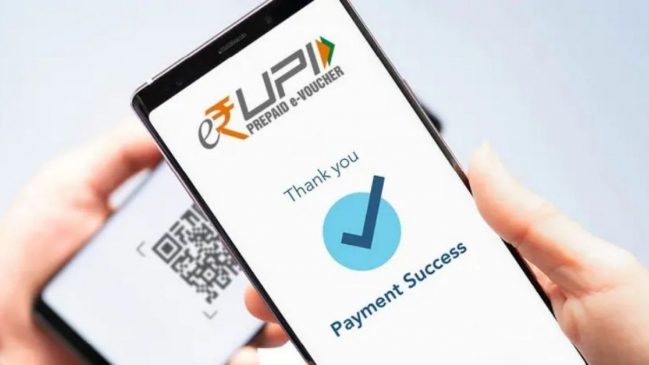With customers across age groups, profiles and demographics on digital platforms, analysing their transaction data would open new avenues for engagement, product innovation and service enhancement
Read More:- Go Digit General Insurance re-files IPO papers with Sebi
The last decade and a half witnessed innovations in financial technology that has forever changed the banking and payments landscape. Not long ago was this unthinkable as millions of Indians, especially from rural areas, were deprived of access to formal financial services due to poor or lack of banking infrastructure.
No one can stop an idea whose time has come, goes Victor Hugo saying. This very much suits digitalisation that is encompassing every aspect of life today, more so in banking.
Game Changer
Aadhaar has single-handedly transformed banking and emerged as the game changer of all innovations. The digital infrastructure created on the Aadhaar platform, India Stack, is helping firms scale up and create sustainable business models. For the BFSI sector, the ease of Aadhaar-based eKYC for on-boarding customers and authenticating transactions resulted in increased customer engagement and value creation for all stakeholders.
Read More:- RBI Monetary Policy April 2023: Key Numbers You Can’t Miss To Know
As of February 2023, over 136 crore (1.36 billion) Indians have Aadhaar number with more than 55 per cent (75.4 crore) of them linking their bank accounts with Aadhaar. Such a huge database of digital identify linked bank accounts helped widen access to financial services at low cost.
The JAM (Jan-Dhan, Aadhaar, Mobile) trinity opened more than 48 crore accounts, with 67 per cent from rural areas. More than 55 per cent of the total accounts are of women, indicating the key role they play in managing household finances.
Digital Payments
Unified payments interface (UPI) has become the new normal for making small-value grocery and food payments. With the amount instantly credited into the bank accounts, entrepreneurs and vendors can focus more on business and increase income. The seamless integration of payments and banking is leading to higher deposit accumulation and savings.
To put in perspective the impact of UPI, the network processed 7,404 crore transactions worth Rs 126 lakh crore in FY22. In FY23, till the end of February around 7,374 crore transactions worth Rs 123 lakh crore have been processed.
The success of UPI is an excellent example of technology enabling inclusion. From the top corporate executives, to students, to women, to vegetable vendors to people in the hinterlands, all get to feel the same seamless digital experience without any differentiation.
Goods and Service Tax
Another digital intervention that has been formalising transactions is the goods and service tax (GST) initiative. Easier tax filings through online portal resulted in many manufacturers and small business owners joining the formal system. It is now possible to collect, store and analyse information on the informal sector. Since the GST launch in 2017, the registered GST tax payer base doubled from over 6 million to 13.6 million by the end of FY22.
Digital Financial Inclusion
An estimated 600 million people need access to quality banking services. Financial inclusion, therefore, is a major step towards achieving inclusive growth. To take banking to the last mile, digital-led branchless model proved an efficient option against the expensive branch approach.
Micro ATM and AePS-enabled neighbourhood shops are the new local banking points. They are helping Bharat customers adopt digital banking, though largely in the assisted mode. The impact of branchless banking on inclusive growth has been:
- Cost-Effective Banking Access: At a fraction of a cost, the neighbourhood stores become banking outlets i.e. human ATMs. It is scalable, sustainable and profitable.
- Employment: More than 22 lakh business correspondent (BC) or merchant outlets provide banking services in villages. An alternate employment opportunity is created for local youth.
- Interoperable and Paperless Platform: Any bank’s customer can bank at the BC outlet. Being paperless is customer as well as eco-friendly.
- Remittances are a key source of family income in rural areas critical for economic and social growth. Branchless points make it easier for the sender and the receiver.
- Local Economy: Enables cash digitization for businesses operating in cash dominated rural markets. Local cash in made available for local consumption, which benefits local economy.
- Democratise Banking: Anytime availability, access to a range of products – savings, insurance, credit, mutual funds, gold loan etc to ensure financial security.
- Direct Benefits Transfer (DBT): The expanding Aadhar linked banking reach plays a critical role in ensuring last mile delivery of welfare payments. The effectiveness of the digital-based channel was felt during COVID-19.
Read More:- 7th Pay Commission: Dearness Allowance Hiked For Govt Employees of These States | Full List Here
Aadhaar is undoubtedly the key for digital integration in India. With customers across age groups, profiles and demographics on digital platforms, analysing their transaction data would open new avenues for engagement, product innovation and service enhancement. As a banker, I personally get excited at the pace of digital transformation that has the potential to realise the fortune at the bottom of the pyramid through inclusive growth.



































